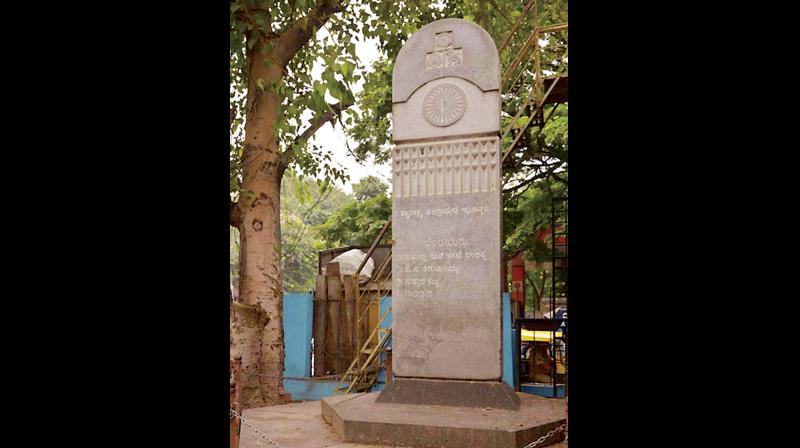Bengaluru: British gunned down students at SBM circle
These are the very same places that we pass by every day without knowing the important role they played.

Bengaluru: Bengaluru has grown leaps and bounds and has earned the moniker of Silicon Valley of India. But during the country’s struggle for freedom, it played a crucial role and had many places that were crucial to keep the patriotic fire burning. These are the very same places that we pass by every day without knowing the important role they played. But Mr T.N. Ramakrishna, through his Rashtra Gaurava Samrakshana Parishath, has been toiling hard to highlight the freedom fighters, who did not get the limelight, by printing calendars and alphabetical charts. In an interview with DC, he talks about places in the city that have historical connection to freedom struggle and more.
Which are the places in Bengaluru that have connection to freedom struggle?
Today's busy Mysore Bank Circle was one such hub of freedom struggle. This was where students of Central College, who supported Mahatma Gandhi's call for Quit India Movement, were gunned down by the British. In memory of the martyrs, a stone plaque was erected in 1972, which is in a shambles today and encroached upon by the Shaneshwara Swamy temple. Central College, Banappa Park, Freedom Park, Hotel Lalit Ashok on Kumara Krupa Road (where Gandhi held meetings during his visits), Malleswaram MD Block, V.V. Puram, Gandhi Bazaar, Chamrajpet and Cantonment were the other areas that were known for freedom struggle.
Did any leading freedom fighter visit Bengaluru?
While we all know about Gandhi's visit, not many know that Madan Mohan Malaviya visited Karnataka Sanskrit College in Chamrajpet.
Can you list some freedom fighters from Bengaluru?
You will be surprised to know that even today, we have around 8,000 freedom fighters in the state, who draw a meagre pension from the government. Only with the help of Mr Babu Krishnamurthy, who has authored biographies of many revolutionary freedom fighters I got to know of them. Haranahalli Ramaswamy of Samyukta Karnataka, former mayor Deshalli Lingaiah, Thirumale Thathachari Sharma, Khadri Shamanna, Siddavanahalli Krishna Sharma, Co. Srinivasaiah and Anaiah were all freedom fighters. Women too took part in the struggle and we know of Gowramma and Ranga Laxmi.
What was the mode of communication? How were the meetings organised?
We had newspapers and magazines, like Vishwa Karnataka, Veera Kesari and Thaai Nadu, in Kannada. Information relating to freedom struggle was disseminated through these journals. For secret meetings, the message was passed on by the word of mouth. Then, freedom fighters did not have the luxury of easy communication and travel. They walked long distances, used bicycles, jatkas and bullock carts to pass the message of freedom struggle.
Was there any revolutionary movement from Bengaluru?
Down South, especially in Bengaluru, majority of freedom fighters followed Gandhi's Satyagraha and nonviolent methods. Secret meetings were held, but not many in Bengaluru.
‘Set up memorial for unsung heroes of Japanese Army’
While millions of Indians fought for India's freedom, not many talk about the role the Japanese played in association with the Indian National Army and its leader Subhash Chandra Bose, lamented Mr Ramakrishna T.N. "Hundreds of Japanese soldiers fought for and lost their lives for India's freedom. Shouldn't their contribution be told? Don't they need a memorial? Hundreds lost their lives and did not go back to their motherland-Japan," he said. The Indian or Japanese government should have the list of Japanese soldiers who took part in the freedom struggle. "Let them check the list. The Indian government can pay a pension to those who are alive," he said.

